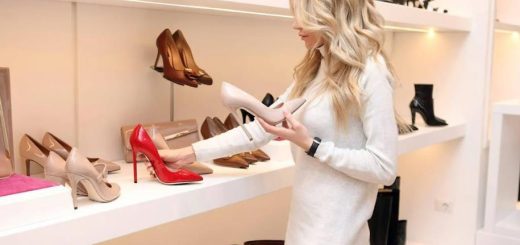Unlocking the Art of Layering: Elevate Your Outfits with Depth and Dimension
Understanding the Basics of Layering
At its core, layering involves combining multiple clothing pieces to create a visually interesting and functional outfit. The goal is to build a cohesive look that adds dimension and texture. Successful layering isn’t just about piling on clothes—it’s about selecting and arranging pieces in a way that complements your body shape, personal style, and the occasion.
Start with a Solid Foundation
The foundation of any layered outfit begins with the base layer. This is typically a well-fitted item that serves as the starting point for your look. Common choices include:
- T-Shirts and Tops: A simple, neutral t-shirt or a fitted long-sleeve top can be the perfect base for layering. Opt for pieces that are comfortable and versatile, allowing you to add additional layers without compromising on fit.
- Turtlenecks and Tanks: For colder weather, a turtleneck can add both warmth and style. In warmer seasons, a sleek tank top can serve as a chic base layer.
Choose base layers in colors and fabrics that can easily be paired with other items. Neutral tones like black, white, and beige are particularly versatile, but don’t shy away from experimenting with bold colors or patterns if they align with your personal style.
Build with Mid-Layers
Once you have your base layer in place, the next step is to add mid-layers. These are the pieces that add complexity and interest to your outfit. Key mid-layer items include:
- Shirts and Blouses: A button-down shirt or a blouse can be layered over your base layer. You can experiment with patterns, textures, and materials to create contrast.
- Sweaters and Cardigans: Knitwear is a fantastic choice for mid-layers. Opt for varying textures and weights to introduce different visual elements. Layering a cardigan over a blouse, for instance, can create a relaxed yet sophisticated look.
When selecting mid-layers, consider the fit and length. A slightly oversized sweater can create a relaxed, cozy look, while a fitted cardigan can add a touch of elegance.
Top It Off with Outer Layers
The outer layer is the finishing touch that ties your look together. It’s often the most visible part of your outfit, so choose items that complement the layers underneath. Essential outer layers include:
- Jackets and Coats: A classic denim jacket, a tailored blazer, or a trench coat can add a polished finish to your ensemble. For colder weather, consider a wool coat or a parka.
- Vests and Gilets: These can be great for adding an extra dimension without adding bulk. They work particularly well in transitional weather and can be layered over sweaters or long-sleeve tops.
The key to outer layers is to ensure they fit well over your other layers without appearing too bulky. Consider the overall silhouette and balance the proportions to avoid overwhelming your frame.
Incorporate Accessories
Accessories play a crucial role in enhancing the depth of your outfit. They can be used to highlight certain aspects of your layers or introduce new textures and colors. Key accessories include:
- Scarves and Shawls: These can add both warmth and a pop of color or pattern. Play with different ways of draping or tying them to add visual interest.
- Belts: A belt can define your waist and add structure to your layered look. Experiment with different widths and styles to see what works best with your outfit.
Remember, accessories should complement rather than compete with your layers. Choose pieces that enhance the overall look without overwhelming it.
Experiment with Color and Pattern
Layering isn’t just about the physical arrangement of clothing—it’s also about color and pattern. Mixing and matching colors and patterns can significantly impact the visual depth of your outfit. Here’s how to approach this:
- Monochromatic Looks: Dressing in varying shades of the same color can create a sleek, cohesive look. This technique also helps in elongating the silhouette.
- Contrasting Colors: Pairing contrasting colors can make each layer stand out. For example, a bright scarf over a neutral base can create a striking focal point.
- Patterns and Textures: Mixing patterns and textures adds visual interest. Consider combining striped shirts with patterned jackets or textured sweaters with smooth pants.
Pay Attention to Proportions
Balancing proportions is crucial for creating a flattering layered look. Here are some tips to keep in mind:
- Balance Top and Bottom: If you’re layering multiple pieces on top, consider wearing slimmer bottoms to avoid a bulky appearance. Conversely, if your top layers are slim, you can afford to wear wider or more voluminous pants or skirts.
- Length and Fit: Layer pieces of varying lengths to create a dynamic silhouette. For example, a long tunic over a shorter shirt can add depth without overwhelming your frame.
Conclusion
Layering is a powerful tool in fashion that, when done correctly, can add unparalleled depth and dimension to your outfits. By carefully selecting and arranging your base, mid, and outer layers, incorporating accessories, and playing with color and texture, you can create looks that are both stylish and functional. Remember, the key to successful layering is experimentation—don’t be afraid to try new combinations and adjust based on what feels and looks best for you. With practice, layering will become second nature, helping you craft outfits that are both visually captivating and uniquely your own.


















